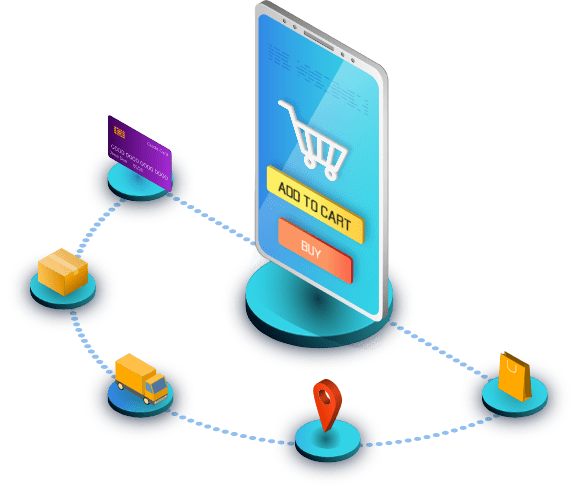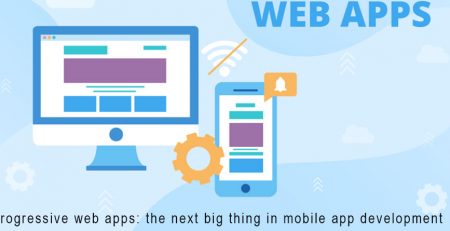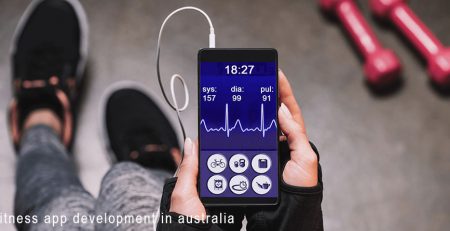Features Every Mobile Commerce App Needs to Have (part 1)
Features Every Mobile Commerce App Needs to Have
Building a mobile commerce app design is one of the best ways to drive sales for ecommerce businesses. That’s because mobile apps convert higher than the mobile web.But simply launching an app isn’t enough to make it successful.The best ecommerce app design on the market have certain features in common. These specific elements are all focused on improving the customer experience, driving sales, and increasing conversions.
mobile app development in australia
Whether your app is live or still in the early development stages, adding the right features will lead to prosperity, success, and profitability.After researching the latest mobile commerce trends, mobile commerce tips, and best practices, I’ve identified the top 15 features your m-commerce app must have.
A significant benefit of your mobile commerce apnp is the ability to communicate with app users. You don’t have this advantage with your mobile site or desktop site for that matter, either.When leveraged correctly, sending the right push notification at the perfect time can lead to sales.
Push notifications can be treated like your email marketing campaigns. You can send product updates, discounts, promotions, and other offers as well. Except push notifications should be reserved for your best offers.
If the offer is so good that you’d send a text message to your customers about it (since you basically are), then send it as a push.70% of app users find push notifications useful. 40% of people engage with push notifications within an hour, compared to just 8% who ignore them altogether.Here’s a breakdown of the most desired that content app users want from a push notification:
- Promotions — 34%
- New developments — 26%
- Geotargeted information — 26%
- Other — 14%
Running a flash sale? Send a push notification. Are you releasing a product with limited availability? Tell users with a push.Consider using push notifications to update customers about their orders. For example, you can send a “package delivered” message when the order arrives at the front door.

As I briefly mentioned, 26% of app users want push notifications relevant to their locations. Furthermore, 53% of people agree to share their location with mobile apps.Use this crucial data to your advantage to improve your mobile commerce marketing strategy. There are so many different ways to leverage location tracking for mobile apps.Here are a few basic examples to showcase how versatile location tracking can be.
For those of you with physical retail locations, you can have a “store locator” feature within your app. Users can use this to find the closest store to their current position.According to a recent consumer survey, the ability to locate physical stores from an app is one of the most valuable features of a mobile commerce app.In addition to your store location feature, you can use geofencing technology to send relevant push notifications.
If an app user walks by one of your stores, you can immediately send them a push notification enticing them to buy. Even if you don’t have any physical stores, geofencing can still be extremely useful.
Here’s an obvious example to illustrate my point.
Let’s say your business sells sports equipment. If an app user goes to the beach, you can send them an offer related to surfboards and kayaks. If a user goes to a ski resort, you can send offers related to snowboarding and skiing.A person’s physical location can also be used to personalize their app home screen. Customers living in Hobart shouldn’t be seeing the same offers as customers living in Alice Spring.
-
User Profiles
Allowing users to log in and make purchases from a customer profile is the ultimate advantage of having a mobile commerce app.This feature has countless benefits for you as well as your customers.
For starters, a user profile gives you so much insight into the mind of each customer. You’ll be able to recommend relevant products based on their purchase history and browsing history.Customers are happy because they are getting personalized offers, and you’re pleased because those recommendations will lead to sales.90% of people find personalization appealing.
As you can see, 80% of consumers say they are more likely to do business with brands that offer a personalized experience.Personalization aside, customer profiles make the lives of app users much easier.
Since all of their information is saved to the profile, they can shop and checkout in seconds. Think about how much information is required to complete a transaction. At the bare minimum, you’re asking for things like:
- Customer name
- Credit card number
- Billing address
- Shipping address
- Email address
Each additional step a customer has to take reduces their chances of converting. From a mobile device, entering all of this information is tedious.However, app users only have to do this once. Then the information can be stored and used for future purchases.
-
Social Media Integration
74% of shoppers are influenced by social media when it comes to purchasing decisions.I’m assuming (and hoping) that your company already has an active presence on social media. So integrate those channels with your mobile commerce app to get the most out of them.
Here’s why. It’s possible that customers who installed your mobile app do not follow you on social media. Even your top customers won’t be opening your app every day, but it’s likely that they’re using social media daily.Adding your Facebook wall or Instagram feed to your app can encourage users to follow you.
On days when they aren’t shopping on the app, you can still engage with those people via social media.Social media integration also saves you time when it comes to adding content to your app. For example, if you install a YouTube plugin, any video uploaded to your YouTube channel will automatically appear in the app. So you won’t have to upload it twice.
-
Discounts and Promotions
Everyone loves to feel like they got a great deal when they’re shopping. So give your customers an incentive to use the app by offering exclusive discounts and promotions.According to a recent study, 65% of people use ecommerce apps to receive exclusive deals and offers.
As you can see from the chart, this ranked first on the list of reasons.This feature will obviously have a lot to do with your brand’s overall image and pricing strategy. I know that some luxury brands never offer discounts or anything like that.
But for the majority of you, this feature will be essential for success.I like the idea of using a discount or promotional offer as a way to drive app downloads from the beginning. For example, you could offer $20 off or 20% discount off the first purchase using the app.
But beyond the initial offer, discounts are still a great way to drive mobile commerce sales. This is especially true for time-sensitive offers.Send push notifications for flash sales or deals expiring soon. If you can create FOMO (fear or missing out), it will entice app users to act quickly. People want to get a discount before it’s too late.
-
Customer Loyalty Program
An app is the perfect platform to facilitate your customer loyalty program.This is a great opportunity for those of you who already have an existing loyalty program, as well as brands starting one from scratch. A mobile commerce app makes it easier for customers to track their loyalty status through their user profile.
There are lots of different ways to promote customer loyalty. All of which entice consumer spending.You can reward customers based on purchase frequency, total spending, or a combination of the two.
What makes a loyalty program better on an app? Take a look at the results of this recent study by CodeBroker.The vast majority of consumers are more likely to participate in loyalty programs if they can easily access information from their smartphones. Nothing makes this easier than a mobile app.
Mobile ecommerce loyalty programs address other customer wants and needs that we previously discussed as well. Earlier, we learned that the number one reason why consumers use ecommerce apps is to receive exclusive deals and promotions.A customer loyalty program delivers exactly what those individuals want.’
-
Lots of Payment Options
Let me take a moment to paint a picture for you.Imagine that a customer just got acquainted with your brand. Maybe they stumbled upon a social media advertisement or heard a friend’s recommendation. The customer visits your website, learns about your app’s first purchase promotion, and decides to download it.
With the app installed on their device, the user browses for products and adds a few items to their shopping cart. Time to checkout, right?As the user continues through the purchase process, they quickly discover that you don’t accept their preferred payment method. The user abandons the cart, and you probably lost them forever.
Don’t let this happen to you. Think about how much work that user just went through and how disappointed they were when they couldn’t complete the order.You can’t assume that everyone wants to pay with a Visa or Mastercard. Even if the customer owns one of those cards, they might get better rewards or benefits by using an alternative method.
Every ecommerce mobile app should accept:
- All major credit cards (Visa, Mastercard, Discover, American Express)
- Debit cards
- PayPal
- Apple Pay
- Google Pay
- Venmo
We haven’t quite reached the point where you need to accept cryptocurrencies, but that might change within the next five or ten years.
Not sure what to use? Don’t worry, just flick us an email at enquiries@masystems.com.au and we will assist you make the best decision! Remember our consultation service is absolutely free.







 Lots of Payment Options
Lots of Payment Options


Leave a Reply